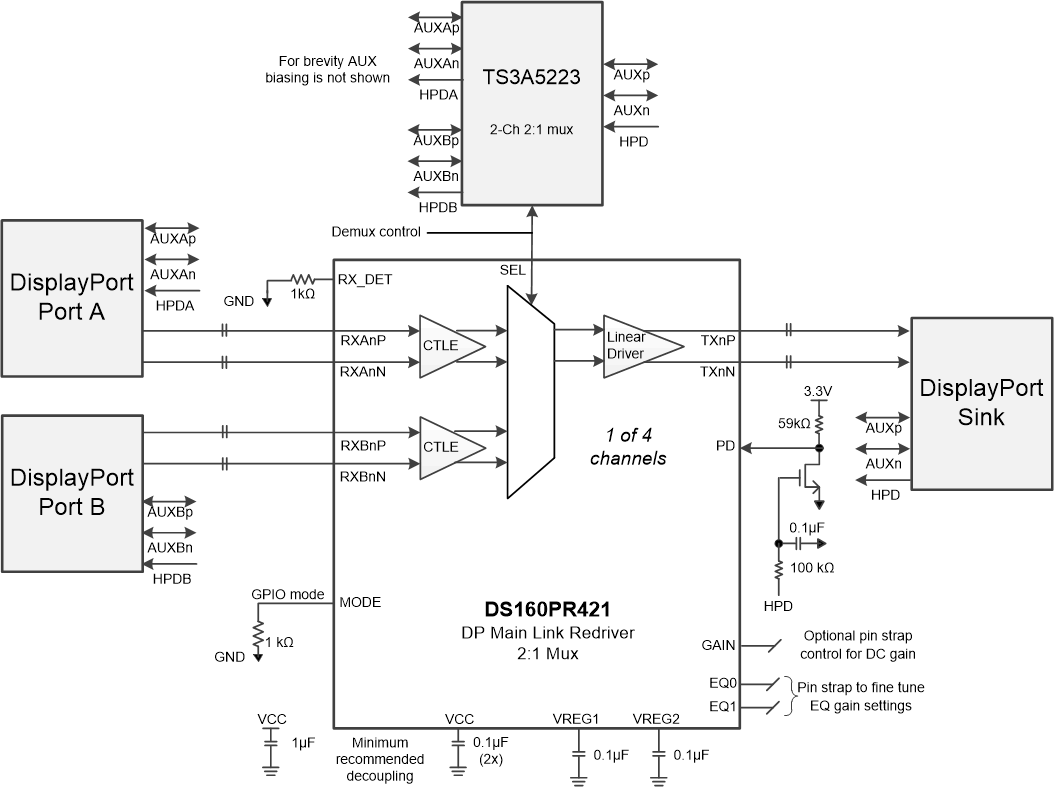SNLS686 February 2021 DS160PR421
PRODUCTION DATA
- 1 Features
- 2 Applications
- 3 Description
- 4 Revision History
- 5 Pin Configuration and Functions
- 6 Specifications
- 7 Detailed Description
- 8 Application and Implementation
- 9 Power Supply Recommendations
- 10Layout
- 11Layout Example
- 12Device and Documentation Support
- 13Mechanical, Packaging, and Orderable Information
Package Options
Mechanical Data (Package|Pins)
- RUA|42
Thermal pad, mechanical data (Package|Pins)
- RUA|42
Orderable Information
8.2.2 DisplayPort Application
The DS160PR421 can be used as a four channel DisplayPort (DP) redriver mux for data rates up to 20 Gbps. To use the device in a non-PCIe application, the RX_DET pin must be pin-strapped to GND with 1 kΩ resistor (L0).
The inverted DisplayPort HPD signal can be used to put the device into standby mode by using its PD pin. Note in a DisplayPort link a sink can use HPD line to create an interrupt for its link partner source. If HPD signal is used for power management an RC filter must be installed to filter out HPD interrupt signals.
The device is a linear redriver which is agnostic to DP link training. The DP link training negotiation between a display source and sink stays effective through the device . The redriver becomes part of the electrical channel along with passive traces, cables, and so forth, resulting into optimum source and sink parameters for best electrical link.
Figure 8-4 shows a simplified schematic for DisplayPort multiplexing application using DS160PR421. Auxiliary and Hot plug detect (HPD) are muxed outside of DS160PR412. If system use case requires implementing DP power states, the device must be controlled by the I2C or the pin-strap pins.
 Figure 8-4 Simplified Schematic for
DisplayPort Multiplexer Application
Figure 8-4 Simplified Schematic for
DisplayPort Multiplexer Application